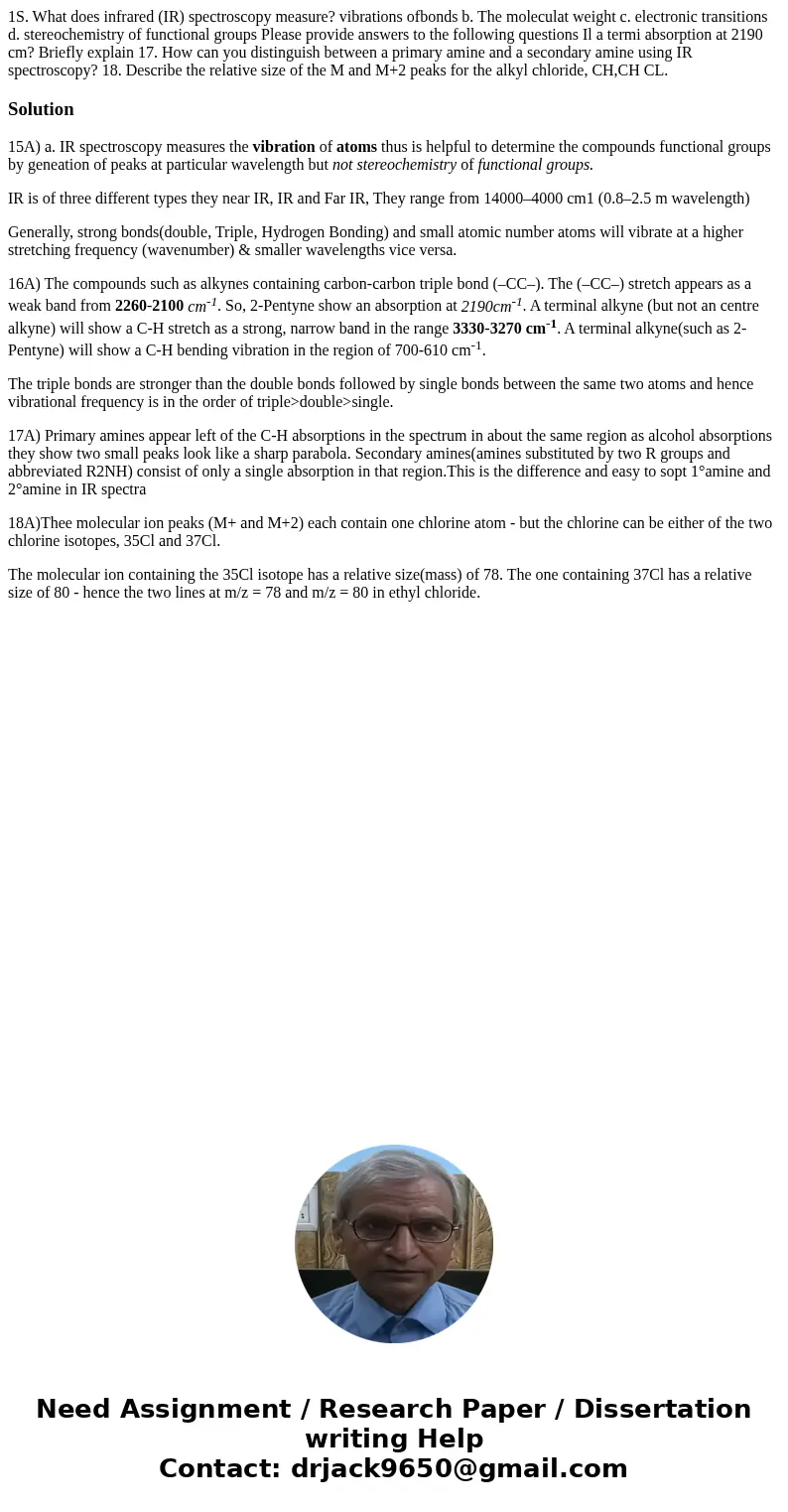1S What does infrared IR spectroscopy measure vibrations ofb
Solution
15A) a. IR spectroscopy measures the vibration of atoms thus is helpful to determine the compounds functional groups by geneation of peaks at particular wavelength but not stereochemistry of functional groups.
IR is of three different types they near IR, IR and Far IR, They range from 14000–4000 cm1 (0.8–2.5 m wavelength)
Generally, strong bonds(double, Triple, Hydrogen Bonding) and small atomic number atoms will vibrate at a higher stretching frequency (wavenumber) & smaller wavelengths vice versa.
16A) The compounds such as alkynes containing carbon-carbon triple bond (–CC–). The (–CC–) stretch appears as a weak band from 2260-2100 cm-1. So, 2-Pentyne show an absorption at 2190cm-1. A terminal alkyne (but not an centre alkyne) will show a C-H stretch as a strong, narrow band in the range 3330-3270 cm-1. A terminal alkyne(such as 2-Pentyne) will show a C-H bending vibration in the region of 700-610 cm-1.
The triple bonds are stronger than the double bonds followed by single bonds between the same two atoms and hence vibrational frequency is in the order of triple>double>single.
17A) Primary amines appear left of the C-H absorptions in the spectrum in about the same region as alcohol absorptions they show two small peaks look like a sharp parabola. Secondary amines(amines substituted by two R groups and abbreviated R2NH) consist of only a single absorption in that region.This is the difference and easy to sopt 1°amine and 2°amine in IR spectra
18A)Thee molecular ion peaks (M+ and M+2) each contain one chlorine atom - but the chlorine can be either of the two chlorine isotopes, 35Cl and 37Cl.
The molecular ion containing the 35Cl isotope has a relative size(mass) of 78. The one containing 37Cl has a relative size of 80 - hence the two lines at m/z = 78 and m/z = 80 in ethyl chloride.

 Homework Sourse
Homework Sourse